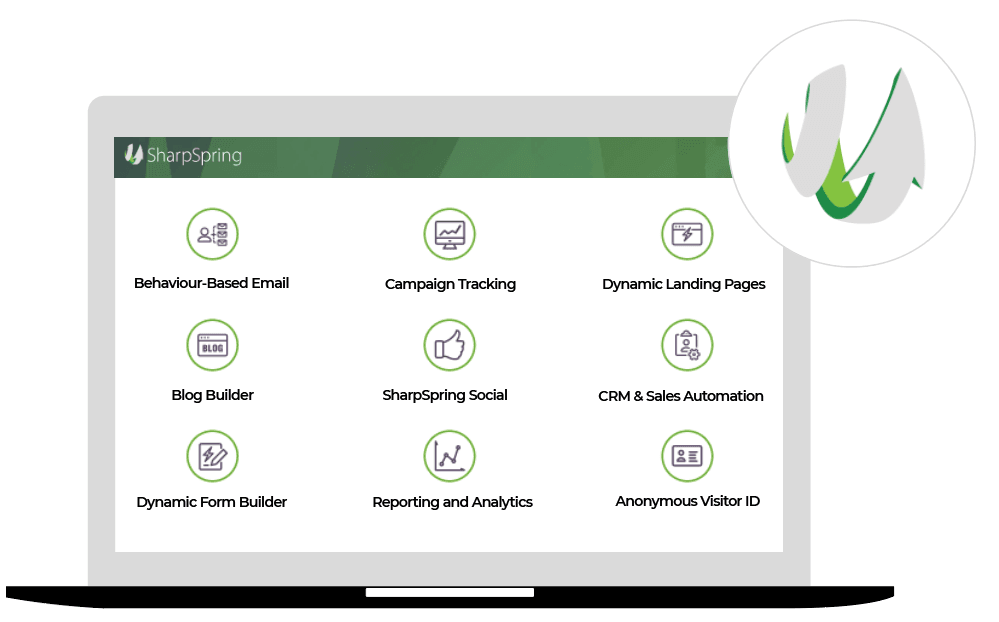Digital Marketing and Servitization

In order to develop a coherent digital marketing strategy, manufacturers must apply effective digital marketing techniques to the product-service being offered, in parallel to their digitalisation and servitization strategies. When adding a layer of service level options it is vital to present these to existing and new customers in the most effective form possible.
Pre-Servitization Web Presence Review
The inherent agile requirements of servitization marketing make an effective central web presence the ideal bedrock of any marketing campaign. Your website should already be well developed, tested and refined for promoting your products and services. If this is not the case then one of the essential preparatory steps for servitization is to review your website and associated online touch points (SEO, advertising, social media, online PR, inbound links).
As digital marketing is a fast advancing field many companies find themselves in the position of having a website that is not performing as well as it should. With manufacturing, in general, this has not been a significant issue to date as the whole sector, with regard to digital marketing, has lagged behind others. Most manufacturing companies have simply not experienced the pressures now common in other sectors. It is, however, becoming increasingly apparent that they are now finding themselves facing the same issues that, for example, the insurance and finance sector have had to face.
We were advising a major insurance company a few years ago and one of their senior directors commented “There’s blood on the wall of boardrooms up and down the country. They have no idea where their customers are going!” The answer was that they were going online… and going somewhere else.
The good news is that the techniques and strategies required for effective digital marketing have already been established and they simply need to be revised and adapted for the manufacturing sector before being applied.
Digital Marketing Evolution
One of the largest takeaways from the last decade of digital marketing evolution is that it can be both a disruptor and a leveller.
Tarmac found, no more than 2 years ago, that a two-man path laying company in the North East ranked no.1 on Google for a large number of their primary branded keyword phrases. This father and son company had the advantage of complete marketing agility, few restrictions and the focus that comes from a very small team. Even when Tarmac were alerted to the situation their complex marketing requirements and restrictions put them in a position where they were unable to react. It is, for example, not uncommon for large companies to have 6 months+ lag between content production and website publication.
Across the board, this has been repeated and is more the norm than an exception. Digital marketing allows the smallest companies to compete with the largest on a relatively level playing field, and they have. Large companies would do well to be aware of this and revise their plans accordingly.
Digital Marketing Audit Checklist
When engaging with, or just considering, servitization it is vital to learn the lessons of other sectors, perform a digital marketing audit and plan the next steps to ensure that your new service can be effectively communicated.
For SME’s and larger corporations a basic digital marketing audit checklist should cover:
- Website technical health check
- Analytics check (typically Google Analytics)
- Content review (audience types and requirements)
- Search engine optimisation (SEO) review
- Primary keywords used by customers
- Site content
- Inbound links
- Competitor analysis
- PPC and advertising review
- Offsite presence (social media, blogs, online publications, directories)
This basic form of review will indicate whether or not you have any work to do pre-servitization. Getting this stage right and gearing up your site to effectively promote new services will present fewer challenges.
Post-servitization digital marketing
With servitization you are presenting customers with options they had not previously considered but that are directly associated. In digital marketing terms, this means that your products and new services will be sharing many of the same keywords. If you already have good SEO positions for primary keywords then your task of promoting your new services will be so much easier.
A hidden and large benefit of servitization is that it presents not only opportunities to market new services but also to enhance the existing marketing of products.
Focussing on SEO, Google is looking to match the ‘best’ websites to keyword searches. Within its algorithm, key factors are content relevance and specific content volume. Servitization allows opportunities to add more product relevant content and to interlink that content with new service content. This is the sort of opportunity that is very difficult to create. Forced techniques often end in clearly manipulated content that is soon ‘marked down’ by Google. With servitization, it’s relevant and very effective.
How effective? Our early application of this concept with Calor multiplied their website visitors by a factor of 10 over a three year period. Interestingly this applied equally to B2B and B2C scenarios.
Online Advertising & PR
A similar situation applies to both online advertising and online PR. Your existing campaigns and strategies will inform what you should be doing with servitization marketing. Effective PPC keyword sets will be equally effective as they are targeting the same general purchase intent. They will need to be supplemented but the core of the work should already be in place. PR opportunities are even better as servitization adds a fresh set of content opportunities with a very topical theme.
SEO and PPC advantages are limited to new business generation but can be enhanced with the appropriate selection of lead handling tools. Customer Relationship Management (CRM) and marketing automation tools have well and truly entered the SME space with low cost, powerful online services. Traditional market leaders such as Hubspot are now being effectively challenged by relative newcomers such as SharpSpring who are able to offer the same level of service at a fraction of the cost.
We recommend taking a brief look at SharpSpring’s website and our blog articles covering marketing automation.

The Agile Website
Servitization represents a fundamental change in the way that manufacturers deliver growth and generate revenue and profits. The transition from selling products to a servitized blend of selling products and supplementary services requires a much more fluid model that will require new information, explanation and has the need to react to feedback and a changing marketplace.
Any website should have the ability to change rapidly and at relatively low cost. There are however many shades of website and some leave a lot to be desired when it comes to these two factors. The good news is that responsive, agile, modular website Content Management Systems (CMS) have advanced rapidly over the last few years and some of the lowest cost options are now some of the best on the market.
We have been in the fortunate position of being able to design, develop and build with both enterprise and SME level CMS’s for many years. We almost universally now advise clients to adopt the massively popular CMS WordPress.
WordPress
WordPress should not be thought of as a simple single platform, it can be used at many levels from out of the box template designs, through to more advanced template and module refinements, completely bespoke builds and even a ‘headless’ option where WordPress is simply used for a pre-written admin area attached to a complex functional application.
As a result of its popularity, WordPress has a truly massive range of enhancements (plugins) from third parties that allow for almost any requirement to be satisfied with elegant, robust and well-supported modules.
We’ve performed a number of cost comparisons based on two higher-end systems (Sitecore and Reddot) with WordPress over the last couple of years and found that the cost for a WordPress deployment for similar levels of design, functionality and marketing features was around one-tenth the cost of the high-end systems. Ongoing maintenance and licencing costs were even further apart with WordPress costs being a factor of 25 times smaller.
This has the effect of freeing up budgets for actually using your website for active marketing rather than allocating all available funds for licensing, design and build. This is absolutely vital when it comes to servitization marketing. When developing income streams based on new services you do not want to be tied to a specific website build or feature set for years. You need to be able to try new ideas as they occur and assess them quickly.
Even if you are wedded to a high-end CMS for specific reasons WordPress can still present a very effective concept testing platform.
Servitization Competition
Even if you don’t currently have any servitization competition this will not remain the case for very long and it is highly likely that plans are already being drawn up. The benefits are just too great for companies to ignore. Experience shows us that while your competitors are considering or offering servitization it is likely that most will not be so advanced with its marketing, especially in the manufacturing sector.
There is always a ‘first to market’ advantage but this is vastly different from ‘first to create’. A service simply isn\’t first to market if it is not effectively promoted.
Manufacturing companies have a window of opportunity to not only be among the first to offer servitization but, just as importantly, to be the first to apply effective servitization marketing techniques.
If you would like to know more about servitization marketing, you can read our latest blog post on what is servitization? You can also get in touch with us by email or, alternatively, you can call us on 01789 491610.


